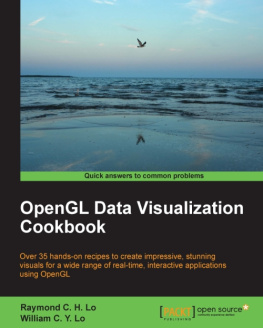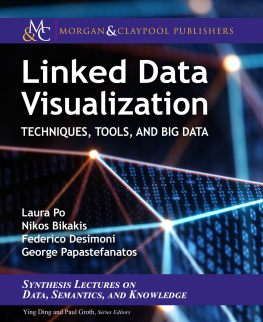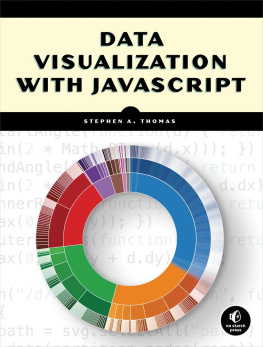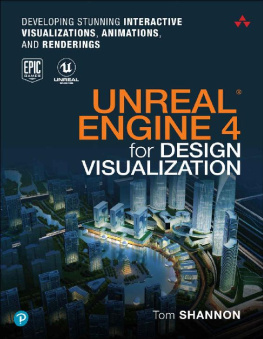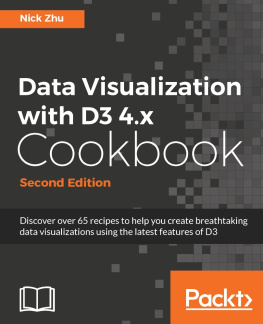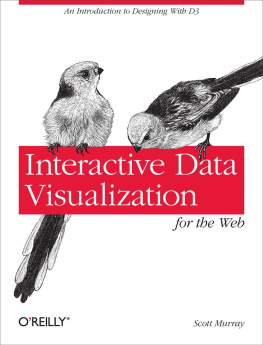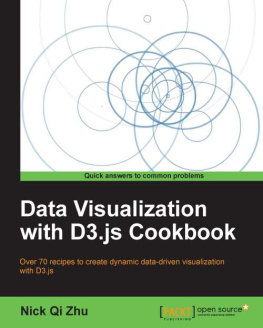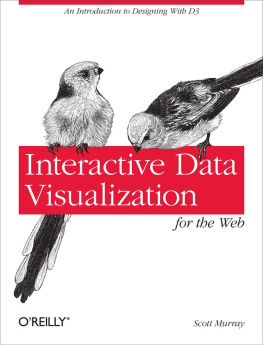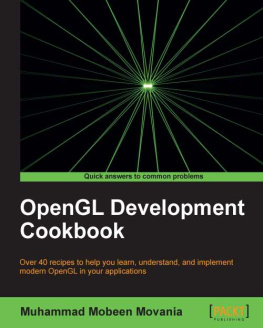Raymond C. H. Lo - OpenGL Data Visualization Cookbook
Here you can read online Raymond C. H. Lo - OpenGL Data Visualization Cookbook full text of the book (entire story) in english for free. Download pdf and epub, get meaning, cover and reviews about this ebook. year: 2015, publisher: Packt Publishing, genre: Computer. Description of the work, (preface) as well as reviews are available. Best literature library LitArk.com created for fans of good reading and offers a wide selection of genres:
Romance novel
Science fiction
Adventure
Detective
Science
History
Home and family
Prose
Art
Politics
Computer
Non-fiction
Religion
Business
Children
Humor
Choose a favorite category and find really read worthwhile books. Enjoy immersion in the world of imagination, feel the emotions of the characters or learn something new for yourself, make an fascinating discovery.
- Book:OpenGL Data Visualization Cookbook
- Author:
- Publisher:Packt Publishing
- Genre:
- Year:2015
- Rating:5 / 5
- Favourites:Add to favourites
- Your mark:
OpenGL Data Visualization Cookbook: summary, description and annotation
We offer to read an annotation, description, summary or preface (depends on what the author of the book "OpenGL Data Visualization Cookbook" wrote himself). If you haven't found the necessary information about the book — write in the comments, we will try to find it.
Over 35 hands-on recipes to create impressive, stunning visuals for a wide range of real-time, interactive applications using OpenGL
About This Book- Get acquainted with a set of fundamental OpenGL primitives and concepts that enable users to create stunning visuals of arbitrarily complex 2D and 3D datasets for many common applications
- Explore interactive, real-time visualization of large 2D and 3D datasets or models, including the use of more advanced techniques such as stereoscopic 3D rendering.
- Create stunning visuals on the latest platforms including mobile phones and state-of-the-art wearable computing devices
This book is aimed at anyone interested in creating impressive data visualization tools using modern graphics hardware. Whether you are a developer, engineer, or scientist, if you are interested in exploring the power of OpenGL for data visualization, this book is for you. While familiarity with C/C++ is recommended, no previous experience with OpenGL is assumed.
What You Will Learn- Install, compile, and integrate the OpenGL pipeline into your own project
- Create interactive applications using GLFW to handle user inputs and the Android Sensor framework to detect gestures and motions on mobile devices
- Use OpenGL primitives to plot 2-D datasets such as time series dynamically
- Render complex 3D volumetric datasets with techniques such as data slicers and multiple viewpoint projection
- Render images, videos, and point cloud data from 3D range-sensing cameras using the OpenGL Shading Language (GLSL)
- Develop video see-through augmented reality applications on mobile devices with OpenGL ES 3.0 and OpenCV
- Visualize 3D models with meshes and surfaces using stereoscopic 3D technology
OpenGL is a great multi-platform, cross-language, and hardware-accelerated graphics interface for visualizing large 2D and 3D datasets. Data visualization has become increasingly challenging using conventional approaches as datasets become larger and larger, especially with the Big Data evolution. From a mobile device to a sophisticated high-performance computing cluster, OpenGL libraries provide developers with an easy-to-use interface to create stunning visuals in 3D in real time for a wide range of interactive applications.
This book provides a series of easy-to-follow, hands-on tutorials to create appealing OpenGL-based visualization tools with minimal development time. We will first illustrate how to quickly set up the development environment in Windows, Mac OS X, and Linux. Next, we will demonstrate how to visualize data for a wide range of applications using OpenGL, starting from simple 2D datasets to increasingly complex 3D datasets with more advanced techniques. Each chapter addresses different visualization problems encountered in real life and introduces the relevant OpenGL features and libraries in a modular fashion.
By the end of this book, you will be equipped with the essential skills to develop a wide range of impressive OpenGL-based applications for your unique data visualization needs, on platforms ranging from conventional computers to the latest mobile/wearable devices.
Style and approachThis is an easy-to-follow, comprehensive Cookbook showing readers how to create a variety of real-time, interactive data visualization tools. Each topic is explained in a step-by-step format. A range of hot topics is included, including stereoscopic 3D rendering and data visualization on mobile/wearable platforms.
Raymond C. H. Lo: author's other books
Who wrote OpenGL Data Visualization Cookbook? Find out the surname, the name of the author of the book and a list of all author's works by series.

